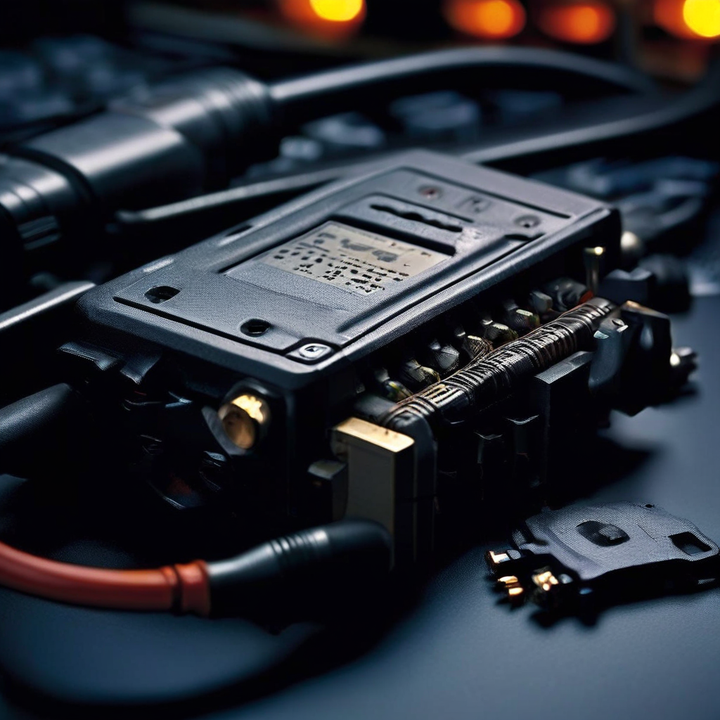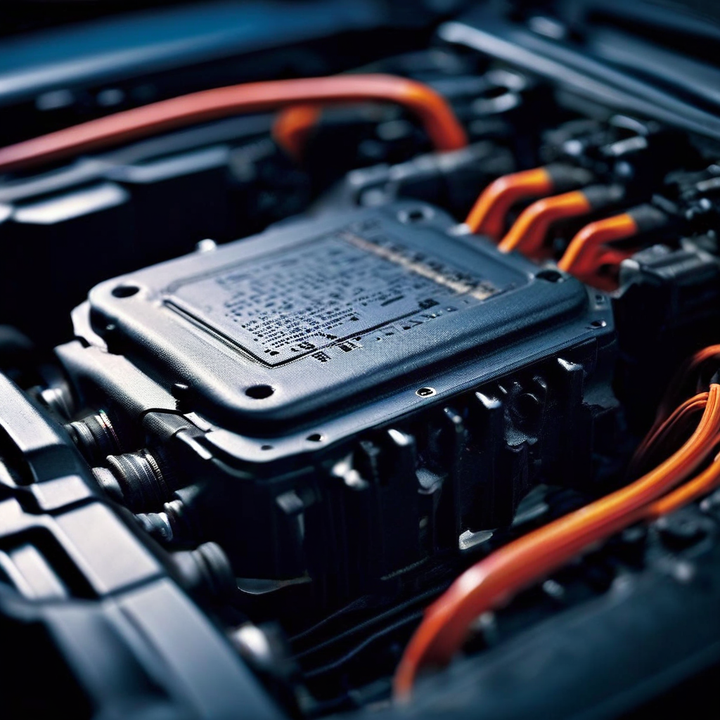


The diagnostic trouble code (DTC) P03C7 indicates an issue with the cylinder 6 pressure sensor circuit in the vehicle's engine. This code is part of the generic OBD-II (On-Board Diagnostics) system, which is a standardized system used by most modern vehicles to monitor and report issues related to the powertrain and emissions control systems.
Before we delve into the nitty-gritty details, let's first understand what the P03C7 code represents:
| Code | Description |
|---|---|
| P03C7 | Cylinder 6 Pressure Sensor Circuit |
This code indicates an issue with the cylinder 6 pressure sensor circuit, which is responsible for monitoring the pressure within the sixth cylinder of your engine. When this sensor malfunctions or encounters a problem with its circuit, it can lead to various engine performance issues and trigger the dreaded check engine light.
The P03C7 code can be triggered by several potential culprits. Here are the most common causes:
The pressure sensor itself may fail due to various reasons, such as:
Age and wear
Contamination
Physical damage
When the sensor fails, it can no longer accurately measure the cylinder pressure, leading to incorrect readings and triggering the code.
Wiring problems can also contribute to the P03C7 code:
Open circuit: Prevents the sensor signal from reaching the powertrain control module (PCM)
Short circuit: Causes incorrect readings or potential damage to the PCM
Damaged wiring: Can lead to intermittent issues and unreliable sensor data
Poor electrical connections at the sensor or PCM can disrupt the signal and trigger the code:
Loose connections
Corroded terminals or connectors
In rare cases, a problem with the PCM's internal circuitry could cause it to misinterpret or improperly read the sensor signal, resulting in the P03C7 code.
To accurately diagnose the root cause of the P03C7 code, follow these diagnostic steps:
Visual Inspection
Carefully inspect the pressure sensor and wiring for any obvious signs of damage or loose connections.
Voltage and Ground Check
Ensure the sensor is receiving the proper voltage supply and ground by checking the connections at the sensor connector.
Resistance Test
Use a multimeter to test the sensor's resistance value and compare it to the manufacturer's specifications.
| Resistance Range | Condition |
|---|---|
| Within Specifications | Sensor likely functioning correctly |
| Out of Range | Faulty sensor or wiring issue |
Technical Service Bulletin Check
Check for any technical service bulletins related to the P03C7 code for your specific vehicle make, model, and year.
Sensor Swap
If all other components check out, swap the cylinder 6 pressure sensor with a known good one to isolate the issue.
Once you've identified the root cause, it's time to roll up your sleeves and get to work:
If the pressure sensor is indeed faulty, replace it with a new one according to the manufacturer's instructions:
Locate and remove the old sensor
Install the new sensor and secure it properly
Reconnect the wiring and ensure proper connections
For wiring issues, you'll need to:
Repair or replace any damaged wiring
Ensure proper routing and protection from potential damage sources
Secure connections and apply appropriate insulation or shielding
If the issue lies with loose or corroded connections:
Disconnect the affected connections
Clean the terminals and connectors using appropriate tools and methods
Reinstall the connections properly, ensuring a secure fit
In the rare case of a PCM issue, you may need to:
Reprogram the PCM with the latest software updates
Replace the PCM entirely if reprogramming doesn't resolve the issue
Note: PCM reprogramming or replacement should be performed by a professional mechanic or dealership technician.
To prevent the P03C7 code from recurring, follow these preventive measures:
Adhere to the manufacturer's recommended maintenance schedule for inspections and replacements.
Ensure proper installation and routing of wiring and connectors during repairs.
Use high-quality OEM or recommended replacement parts.
Avoid exposing the engine components to excessive moisture, heat, or contaminants.
Regularly inspect the engine bay for any signs of wear, damage, or loose connections.
The cost of addressing the P03C7 code can vary depending on the root cause and the vehicle make and model:
| Repair | Typical Cost Range |
|---|---|
| Cylinder Pressure Sensor Replacement | $50 - $200 |
| Wiring Repair | $100 - $300 (parts and labor) |
| PCM Reprogramming | $100 - $300 |
| PCM Replacement | $800 - $1,500 (part and programming) |
Note: These cost estimates are approximate and may vary based on your location, labor rates, and specific vehicle requirements.
Mastering the P03C7 code requires a combination of knowledge, diagnostic skills, and hands-on experience. By following the steps outlined in this guide, you'll be well-equipped to tackle this code and keep your vehicle's engine running smoothly.
Remember, every code is an opportunity to learn and grow as an automotive technician. Embrace the challenge, stay curious, and never stop expanding your expertise. Who knows, you might just become the master of the cylinder 6 pressure sensor circuit!
The cylinder 6 pressure sensor measures the pressure inside the sixth cylinder of the engine. This information is used by the engine control system to optimize combustion and ensure proper engine operation.
Common symptoms include rough idling, decreased fuel efficiency, and illumination of the check engine light. The engine may also experience misfiring or loss of power.
You can test the sensor by checking its resistance value with a multimeter and comparing it to the manufacturer's specifications. Additionally, you can swap it with a known good sensor to isolate the issue.
Wiring issues can be caused by open circuits, short circuits, or physical damage to the wiring harness. Proper routing and protection of the wiring are crucial to prevent these issues.
Corroded electrical connections should be cleaned using appropriate tools and methods, such as wire brushes, contact cleaners, or sandpaper. Ensure proper reconnection and insulation after cleaning.
Yes, in rare cases, a problem with the powertrain control module (PCM) can cause it to misinterpret or improperly read the sensor signal, resulting in the P03C7 code.
The cylinder pressure sensor should be replaced according to the manufacturer's recommended maintenance schedule or if it fails diagnostic tests. Regular inspections can help identify potential issues before they become major problems.
Ignoring the P03C7 code can lead to further engine performance issues, decreased fuel efficiency, and potential damage to other components if the underlying problem is not addressed.
While aftermarket parts may be more affordable, it is generally recommended to use OEM (Original Equipment Manufacturer) or manufacturer-approved replacement parts to ensure proper fit, function, and longevity.
To prevent recurrence, follow the manufacturer's maintenance schedule, use high-quality replacement parts, ensure proper installation and routing of wiring and connectors, and avoid exposing the engine to excessive moisture, heat, or contaminants.

Miguel started tinkering with car radios as a teenager, fascinated by the intricate dance of wires and circuits. This passion led him to pursue a career as an automotive electrician. For the past 10 years, Miguel has tackled everything from flickering headlights to mysterious electrical gremlins. He thrives on troubleshooting electrical problems and enjoys sharing his knowledge to empower car owners to understand their vehicles better.



